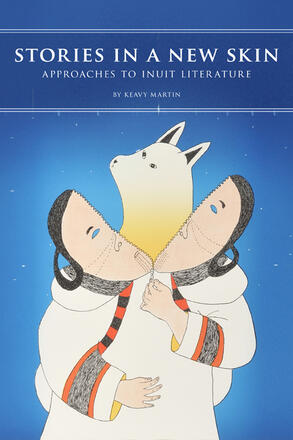
Stories in a New Skin
Approaches to Inuit Literature
La description
In an age where southern power-holders look north and see only vacant polar landscapes, isolated communities, and exploitable resources, it is important to note that the Inuit homeland encompasses extensive philosophical, political, and literary traditions. Stories in a New Skin is a seminal text that explores these Arctic literary traditions and, in the process, reveals a pathway into Inuit literary criticism. Author Keavy Martin considers writing, storytelling, and performance from a range of genres and historical periods – the classic stories and songs of Inuit oral traditions, life writing, oral histories, and contemporary fiction, poetry and film – and discusses the ways in which these texts constitute an autonomous literary tradition. She draws attention to the interconnection between language, form and context and illustrates the capacity of Inuit writers, singers and storytellers to instruct diverse audiences in the appreciation of Inuit texts. Although Eurowestern academic contexts and literary terminology are a relatively foreign presence in Inuit territory, Martin builds on the inherent adaptability and resilience of Inuit genres in order to foster greater southern awareness of a tradition whose audience has remained primarily northern.
Récompenses
- Winner, Gabrielle Roy Prize (English Section) 2012
Reviews
“This book is a model for how to approach a culturally unfamiliar text and gives even a neophyte a way to start reading otherwise intimidating or obscure works. ”
- Robin McGrath
“Asks questions which will guide the reading of Inuit literature for years: what would a truly Inuit form of literary criticism look like? How can southern readers engage with Inuit literature in a way that acknowledges its connections to land, family, spiritual life, and community? How can readers come to embody its lessons?”
- Jennifer Hardwick
"I, for one, emerged from the book with a sharper understanding of how a western (or southern) trained academic has found the language within Inuit intellectual culture to speak to a western/southern academic audience about Inuit art. Moreover, Martin enacts her reciprocal obligations in an ethical engagement to the (real, political) people of her scholarly work."
- Allison K. Athens
“One of the strengths of this book is its focus on the diversity, depth, and historic importance of Inuit literature and the advantages of studying this body of work as Inuit literature, rather than simply including a few examples of Inuit writing in the context of studying ‘Aboriginal’ or for that matter ‘Canadian’ literature.”
- Sophie McCall
"Martin has listened carefully to Indigenous authors and critics who have for decades argued that their literature should be analyzed on its own terms, according to tribal and community perspectives and in keeping with Indigenous knowledges. While Martin is not Inuit, she has gone to great lengths to visit the Far North, learn Inuktitut, and live for periods of time among the people. This lived experience, combined with her excellent literary theoretical and analytical skills, has produced this gorgeous book. In it Martin brings new perspectives to published and oral texts. As she argues, the most appropriate and sophisticated approach to Inuit stories is to recognize how both tradition and adaptation have shaped them."
- Jury's Comments, 2012 Gabrielle Roy Prize (English Section)